Ethnographic Expedition 2008. Part VIIIAugust 18–24, 2008 Hauler Gena had never dreamed of being anything but a truck driver, and he was incredibly happy that his dream had come true. During the two days I spent in the cab of his truck, I heard many stories about life in the Far East over the past 15 years. On top of that, the experience completely changed how I see freight transport and truckers. I learned to judge maneuvering distances, estimate speeds, account for a 15-meter-long trailer, and pass judgment on drivers who fail to consider all of the above. 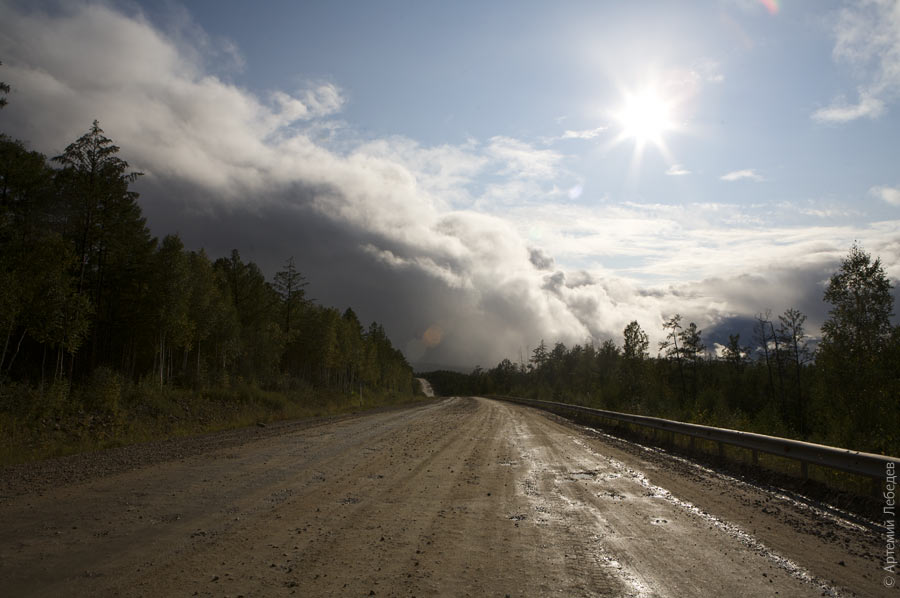 Long-haul truckers are deeply unfortunate people. They’re not allowed to drive anywhere besides their pre-approved itineraries. And even official itinerary documents don’t always save them from bribe-seekers. Hauler Gena stopped to have lunch with an old friend who used to be a cop, but has now bought a former highway patrol post and turned it into a restaurant. One of the important topics of conversation was how the car hauler could swing over to Blagoveshchensk when no such detour was provided for on the itinerary. After telling a joke about why no one’s ever seen a one-eyed traffic cop, the seasoned former officer advised us to stop at a highway patrol post as soon as we hit the city, go to the shift captain, tell him about the Range Rover tragedy and appeal to his mercy. And that’s exactly what happened—the car hauler arrived in Blagoveshchensk that night, and its driver wasn’t quartered on the spot. Moumousique went off to a repair shop. At the time, I didn’t yet know I would be spending an entire week in Blagoveshchensk, rushing to the airport every other day to pick up spare parts coming in by plane. I just wanted one thing: to make it to Vladivostok in my own car. HeiheMapHalf the residents of Blagoveshchensk spend the weekend in China, which is right across the river. We took a boat across but were refused entry into the city: the Olympics were underway, and only Amur Oblast residents were being allowed in by way of exception. So we had to make do with the trade island. 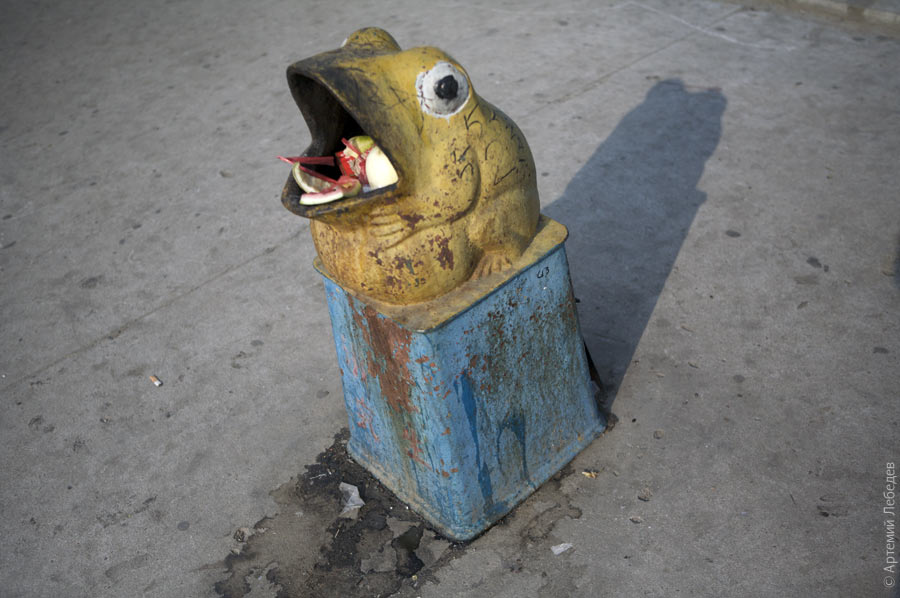 The passport control checkpoints are equipped with devices for rating the border agents. 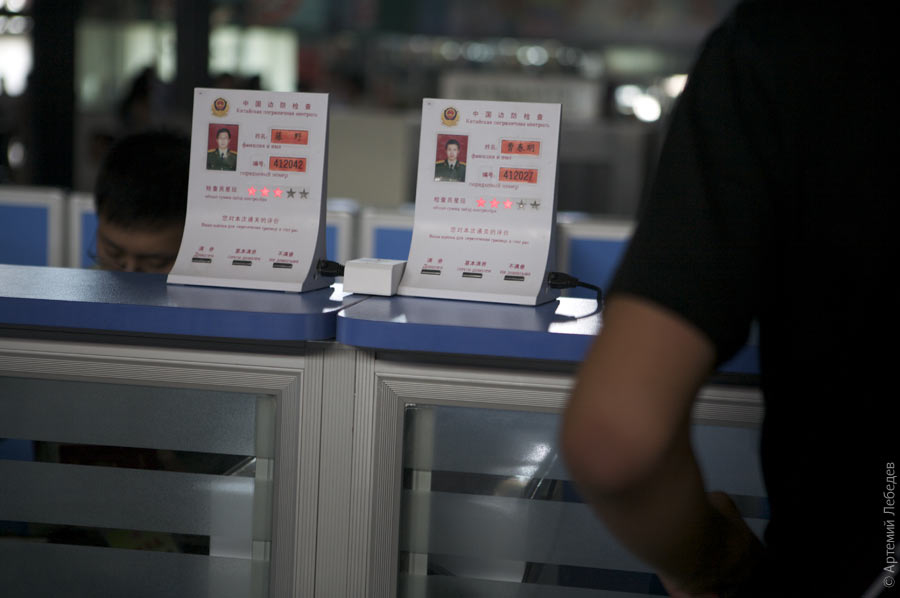 In China, you can stuff your face for 50 rubles (about $2), take a leisurely steam bath for 100, and get more than enough beer for five people for 200. One taxi driver complained that bowling had gotten more expensive: it used to be five dollars for the evening, and now it was ten. Another told me about how a Chinese waitress wasn’t polite enough to him, so he complained to the owner, and she was fired on the spot. 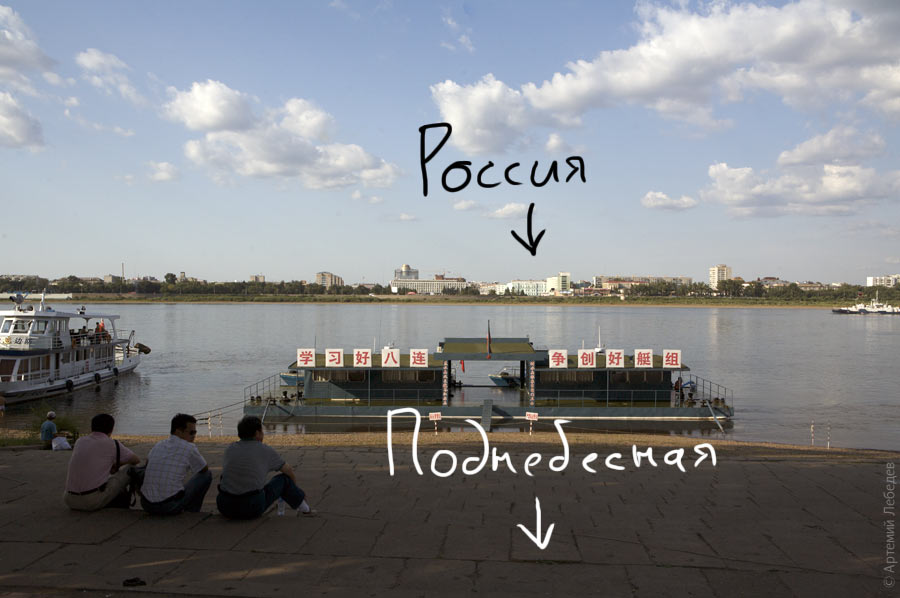 Russia, the Celestial Empire BlagoveshchenskMapThe city has improved considerably since last time. 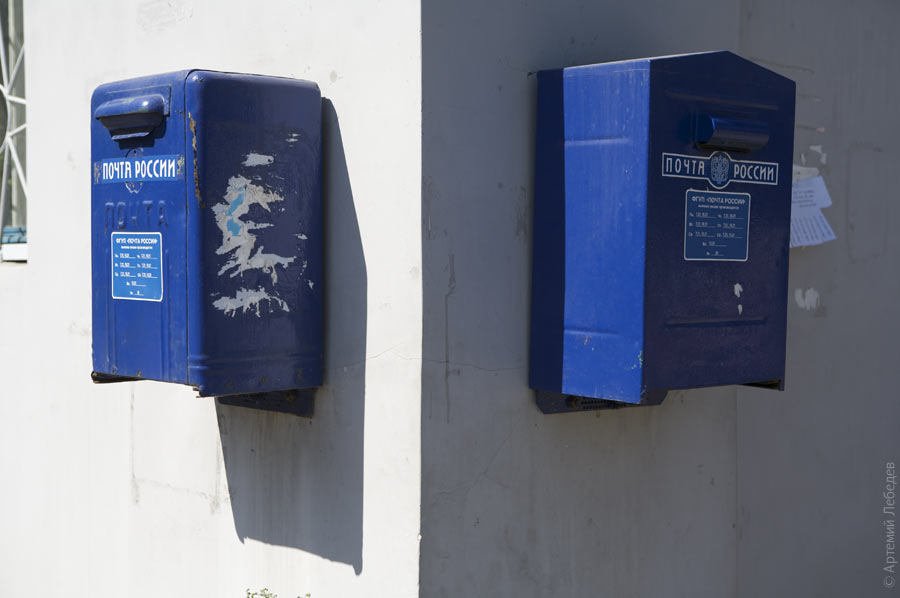 Russian Post The density of retail businesses per linear meter is staggering. 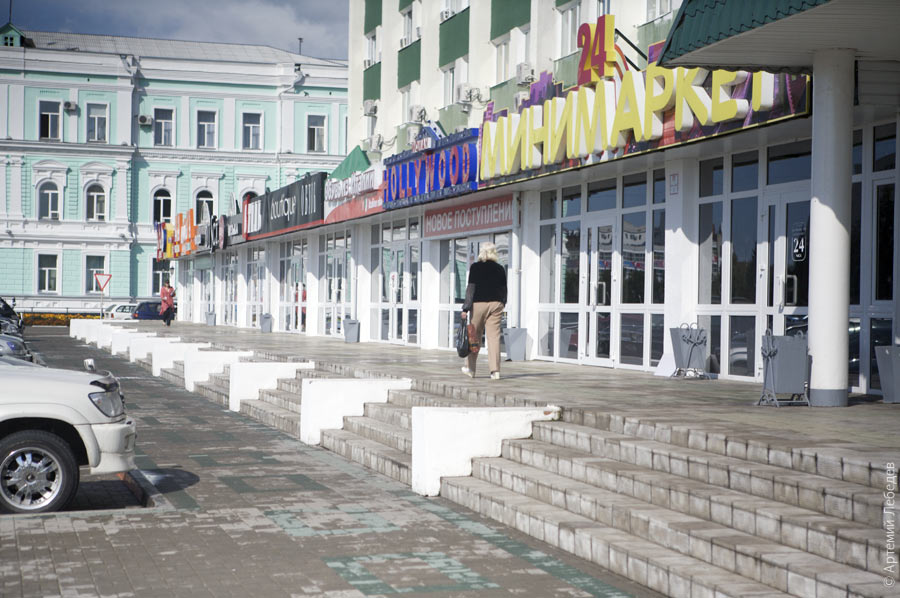 All the ground floors are selling something. 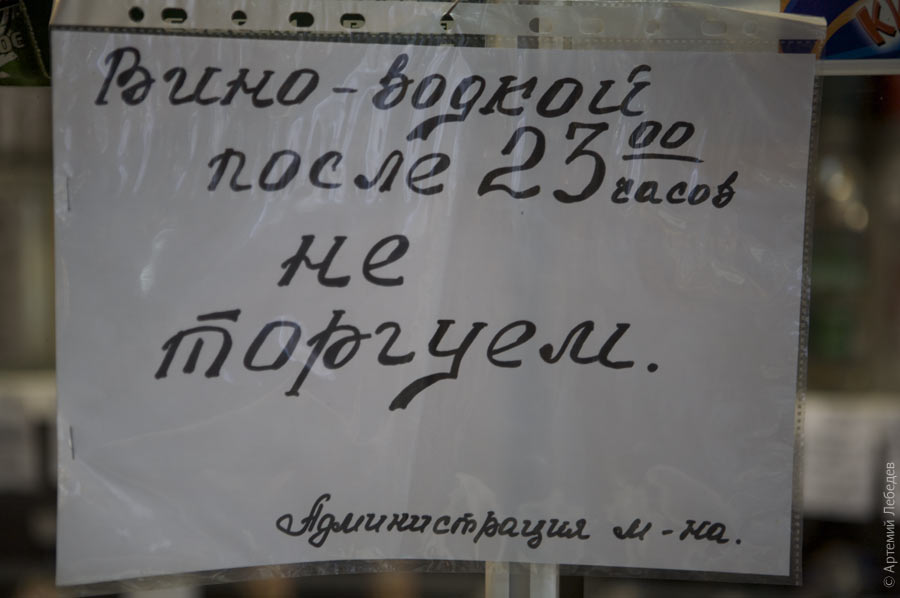 We do not sell wine and spirits after 11 p.m. —Store Management Although there are plenty of supermarkets here, the grocery trucks of the Amursky Partizan farm collective are insanely popular. There’s always a line for their farm-fresh eggs and chicken. 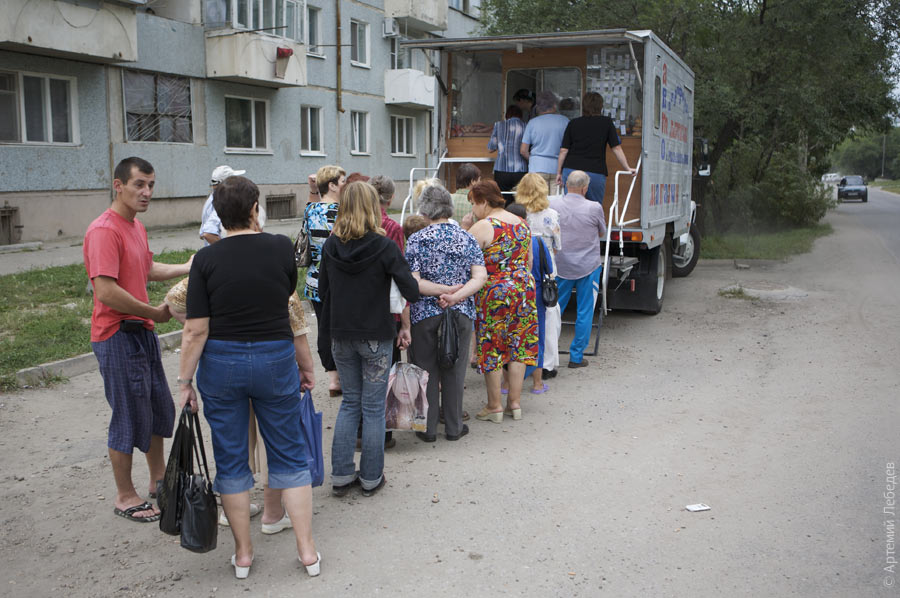 Street vendors dispense kvas out of plastic barrels rather than the usual cistern trailers. 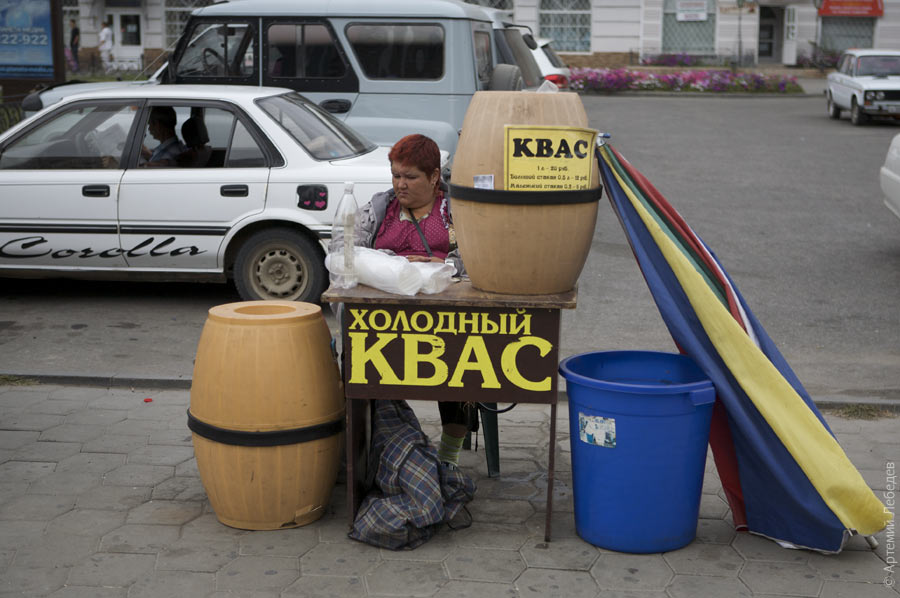 Cold kvas Most people, of course, prefer beer. 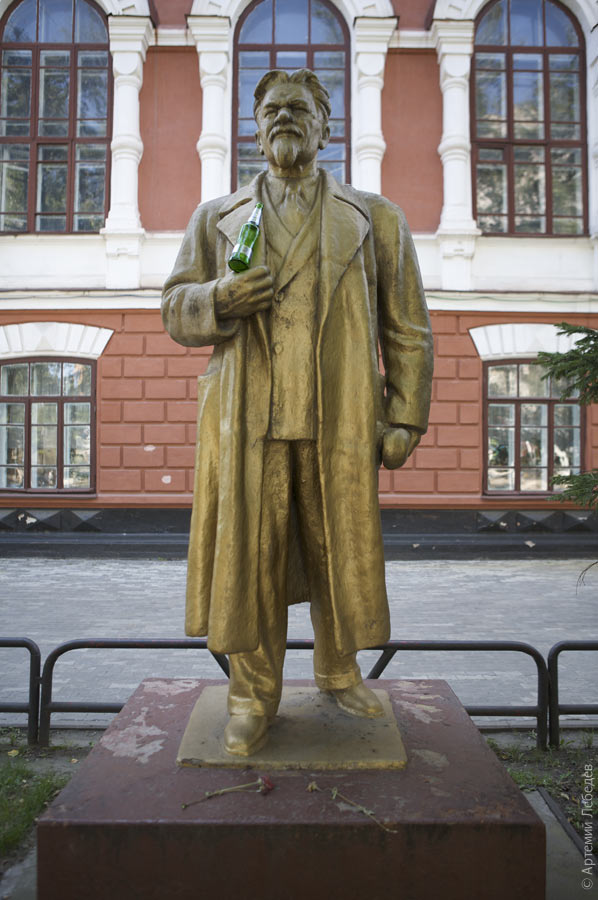 Typical Blagoveshchensk architecture involves reinforced concrete with archway motifs. By the way, many people now buy their old folks apartments in Heihe because the real estate there is five times cheaper and the housing quality is five times better. .jpg) A distinctive local feature: the window frames of glassed-in loggias and balconies extend 20 cm or so past the edge of the building. 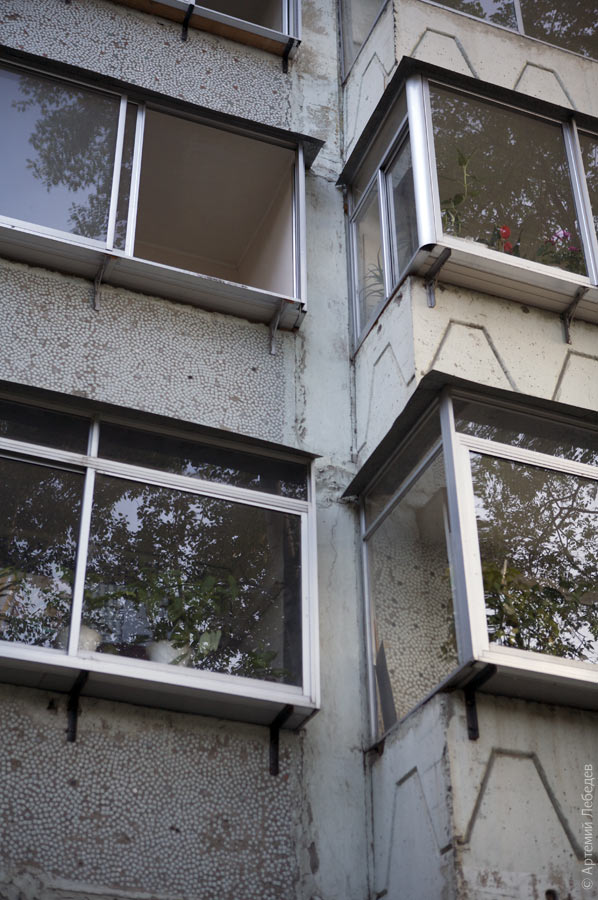 You can find magnificent traffic sign mounting brackets here. 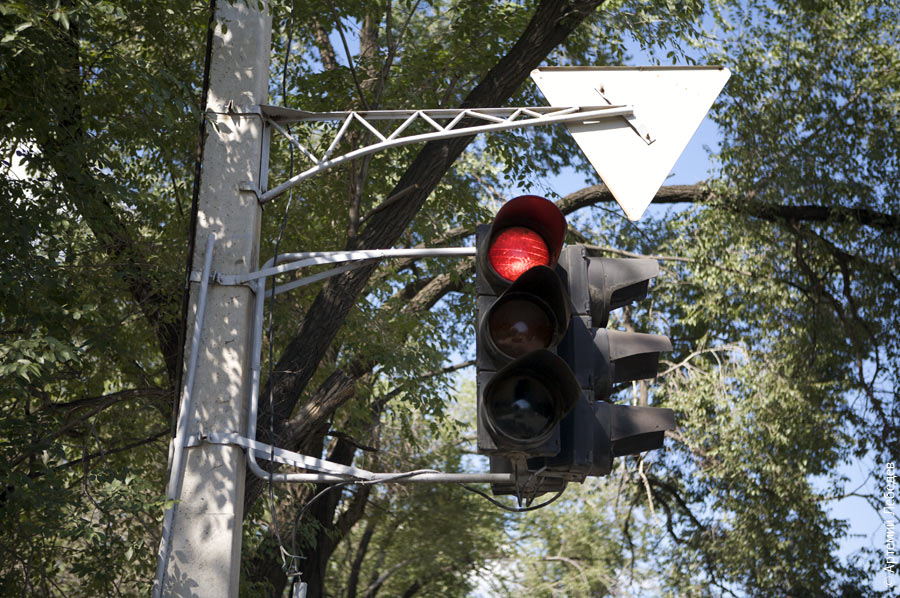 Some intersections have been equipped with buttons for signaling one’s desire to cross the road. 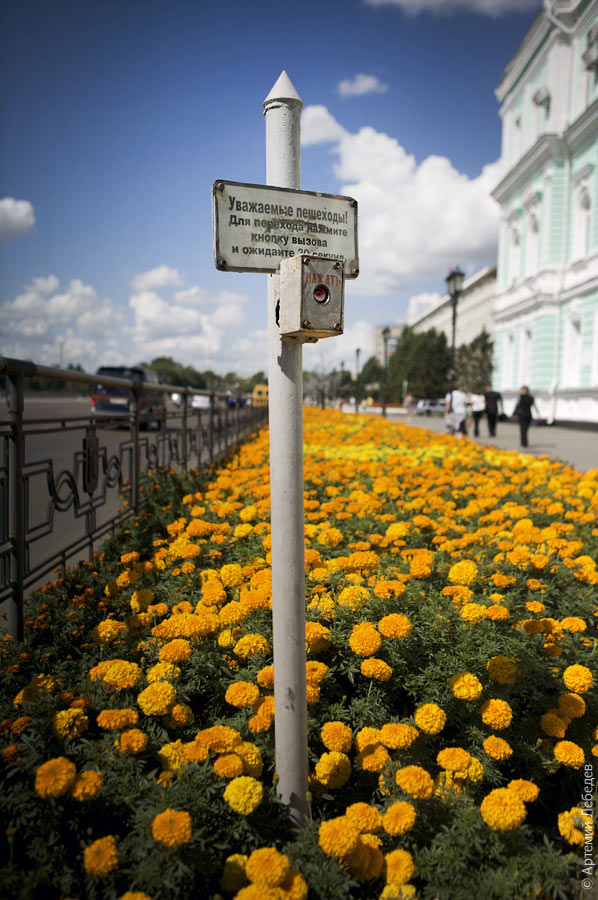 Dear pedestrians! To cross, press the call button and wait 30 seconds. [Press] The local traffic safety authorities employ talented poets and artists.  Driver, give way to pedestrians! Reminder to drivers, / note to pedestrians: / for kids, any crosswalk / is always dangerous. The creators of the “Caution, children!” poster overlooked not only the comma but also a more crucial detail: for some reason, the driver’s hands holding a kilo of sausage links are depicted from the pedestrian’s point of view (as evidenced by the thumbs). 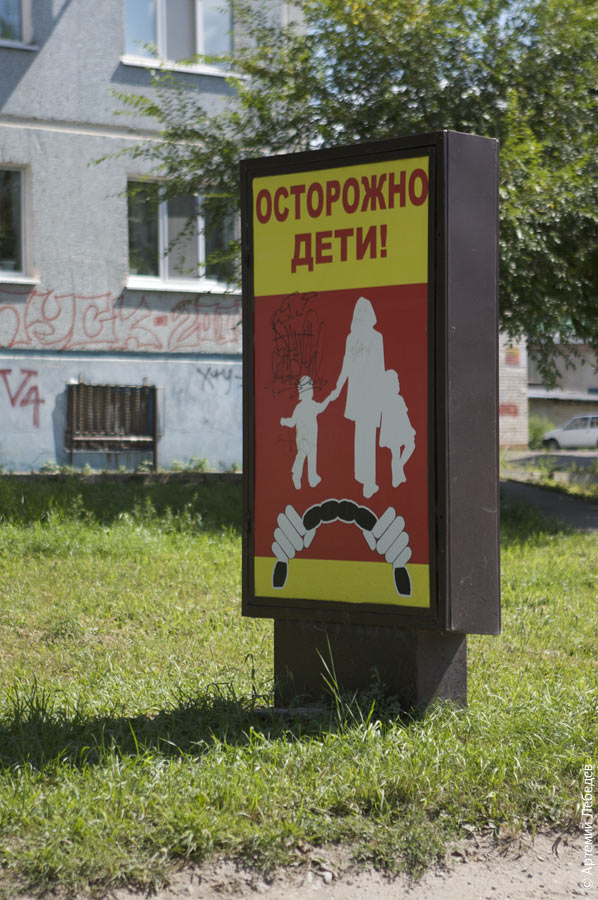 Caution children! Fixed-route taxis are eating into the livelihood of buses and trolleybuses. By the way, the trolleybus stop signs all feature a photographic image of this mode of transportation—for ease of recognition. 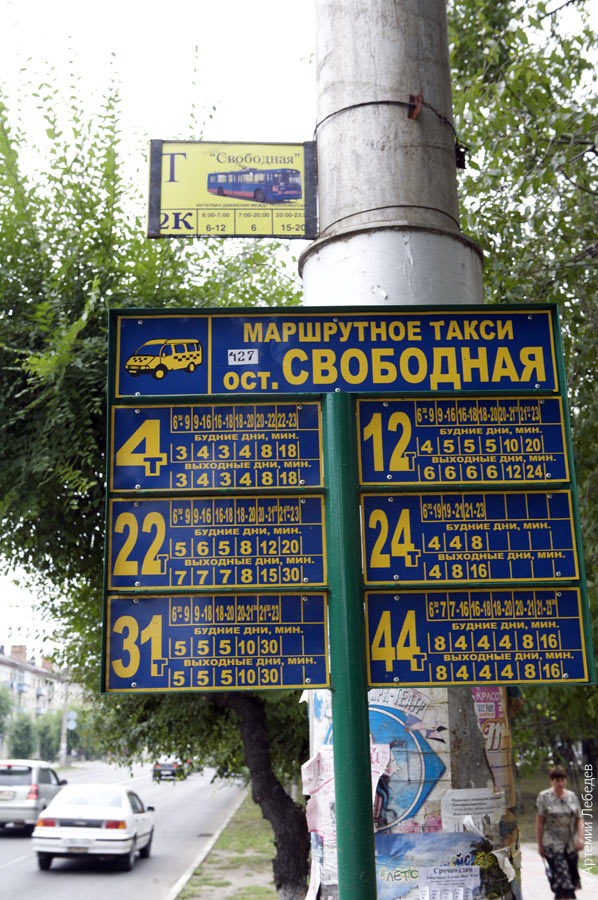 Fixed-route taxi. Svobodnaya stop. Weekdays, mins. Weekends, mins. The design of the bus stop, in turn, makes it abundantly clear that other forms of public transportation aren’t welcome here. A is for autobus. Hello to the stop in Naberezhnye Chelny.  Blagoveshchensk Dairy Plant The road to the airport is decorated with lampposts whose top part evokes an airplane. The same caliber of creativity can be seen on the road from Kaliningrad to Svetly: the tops of the lampposts there resemble seagulls. 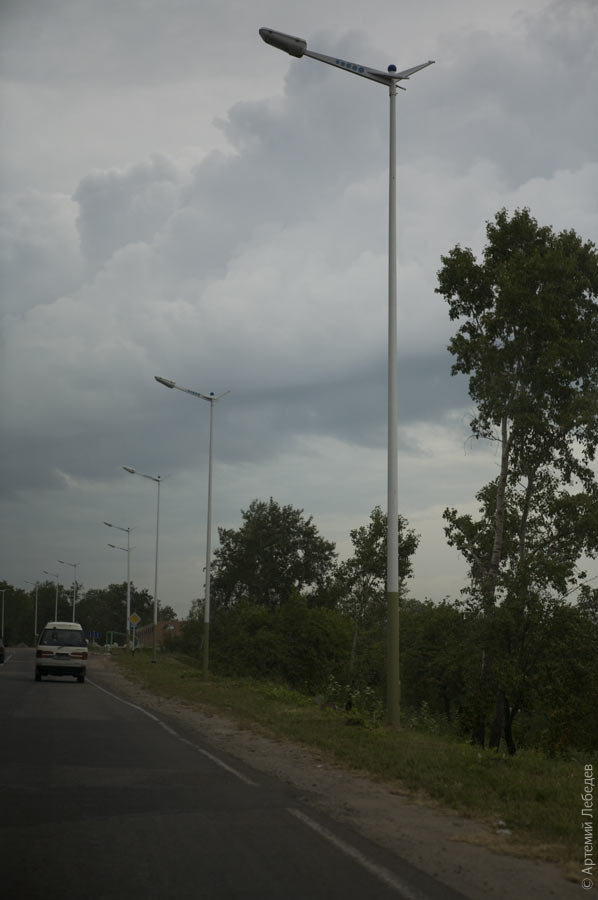 They don’t combat flyer posting here—they facilitate it. Special boards explicitly marked “for flyers” are strapped to the lampposts and bus stops. With time, the text disappears under the thick cultural layer. 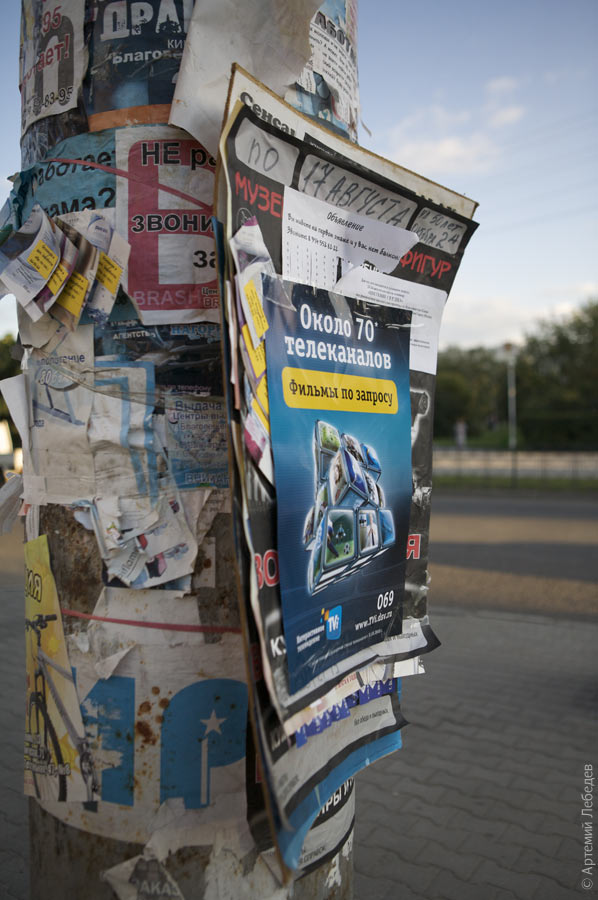 Blagoveshchensk is hardly the kind of city where you’d want to spend a week if given the choice. As soon as the requisite spare parts arrived from London and my car was running again, the expedition headed onwards. 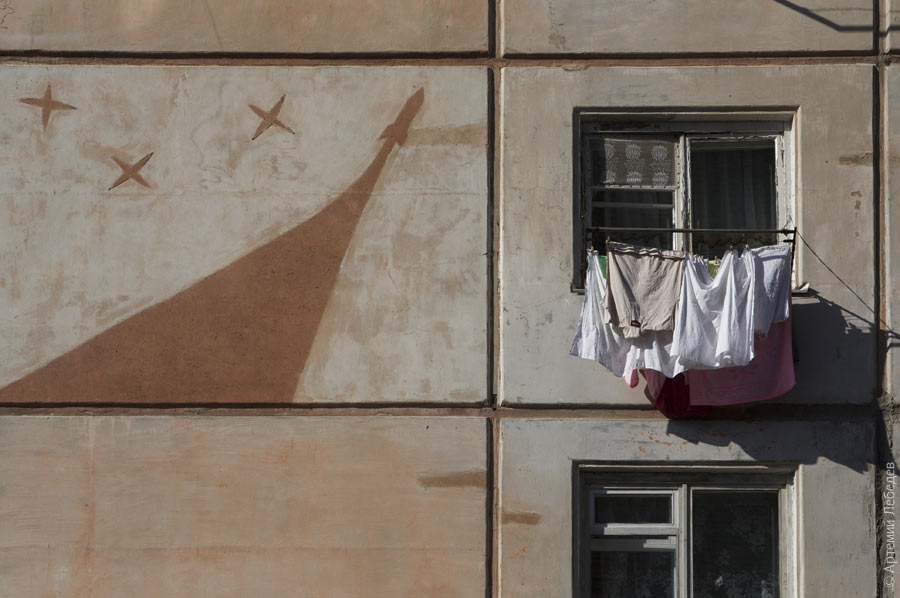 Since we wanted to get to the easternmost point on our itinerary as quickly as possible, we decided to save Birobidzhan and Ussuriysk for the way back. At some point along the highway, there’s a useless giant paved square with a “Moscow—Vladivostok” sign on it. I think it was built for Putin’s visit and the inauguration of the Amur Highway. Indeed, if you look at it from here, there’s asphalt in both directions as far as the eye can see. The placement of the actual wall with the text couldn’t be better: it hides those who need to take a number two from the prying eyes of anyone driving from Moscow to Vladivostok or back. 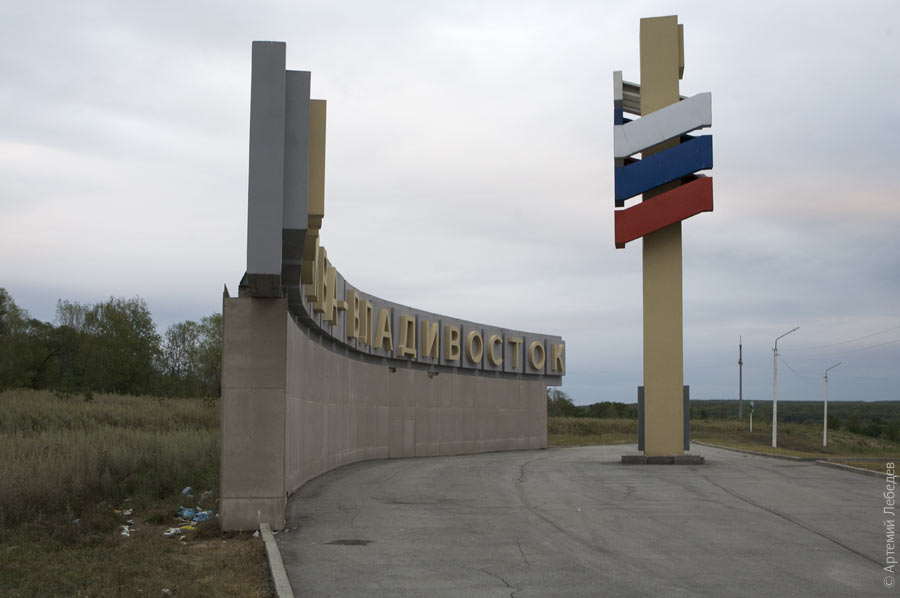 KhabarovskMapI’d already been here four times previously and described everything in sufficient detail. To me, Khabarovsk feels like a pleasant, cozy, quiet, almost resort-like city. The whole place is incredibly clean and incredibly tranquil. The city has started installing traffic light poles that bear a remote resemblance to the ones in New York. Admittedly, they also look like the gallows in a game of Hangman, but only a little bit. 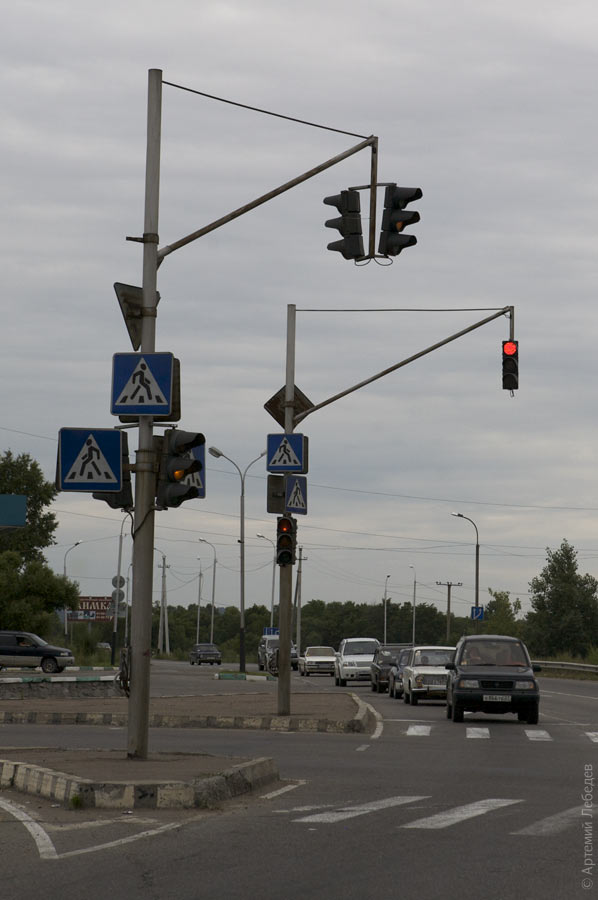 Interesting new details turn up with every visit here. 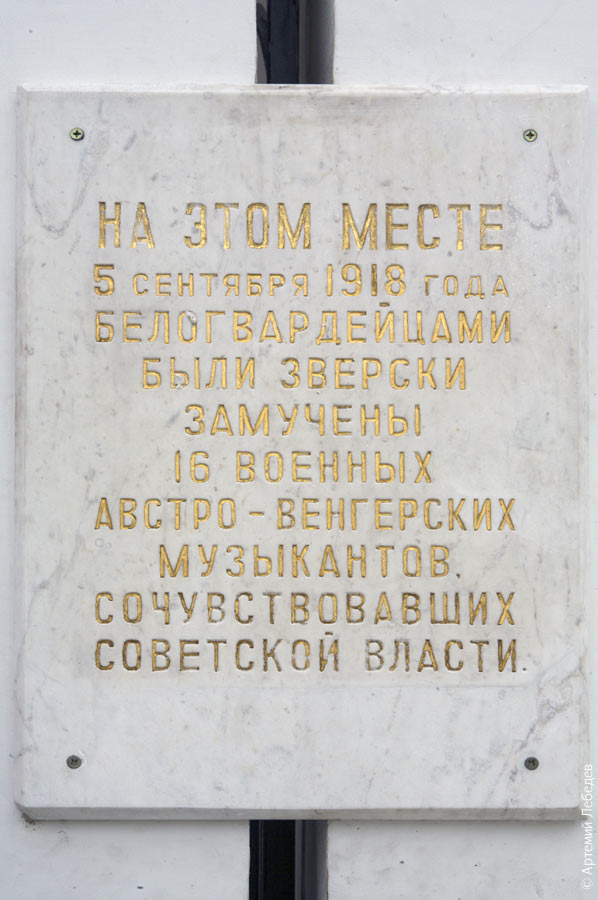 On September 5th, 1918, sixteen Austro-Hungarian military musicians were savagely tortured to death on this spot by members of the White Guard for sympathizing with the Soviet regime. I kept stopping at Alliance Oil gas stations the entire way from Blagoveshchensk because they had a special promotion: collect 50 stickers and get a free terry towel. Every time I filled up, I would get stickers and stash them in my glove compartment. The cashier scans the barcode on my ice tea straight through the window. How can you not love a gas station chain like this? 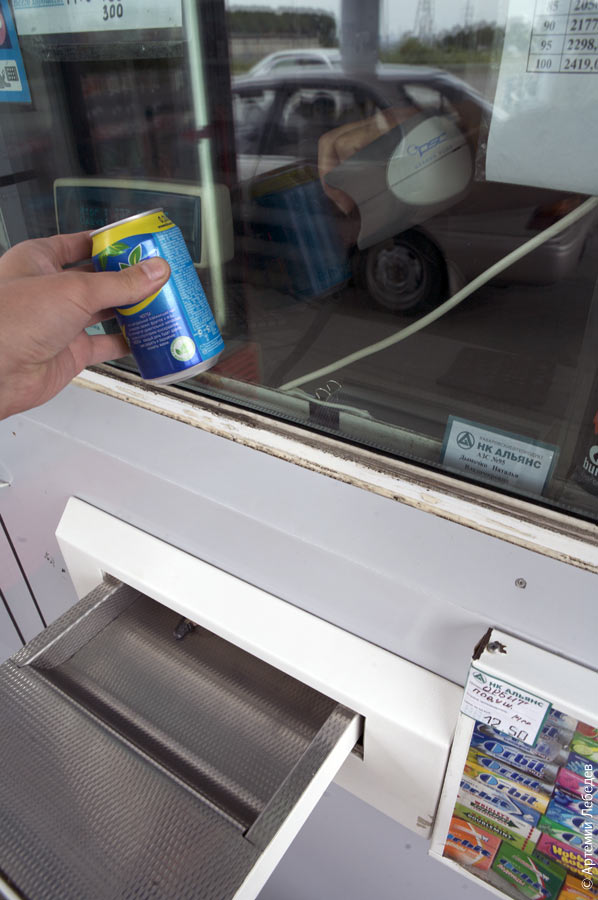 An innovation has been introduced in Khabarovsk Krai: pedestrian crossing signs are now painted directly on the asphalt. Since they’re depicted without the appropriate perspective distortion, it’s absolutely impossible to quickly figure out what just flashed under your wheels (see an example of how it should be done on the streets of Berlin). 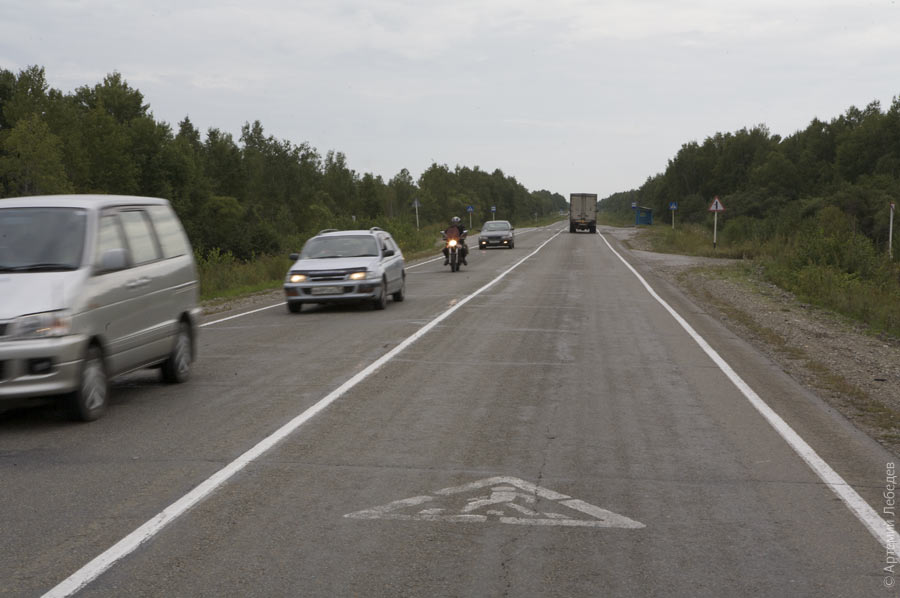 VladivostokMapVladik is positively flourishing compared to my last visit a year ago—it’s got wealth, swank and glamour coming out of its ears. And all with a slight tinge of the gangster charm that’s typical for port cities. Chinese characters are frequently used in Korean to clarify the exact meaning of a word. The Russian language is likewise insufficiently rich to convey the right nuance of “Hunchun,” so a clarification is provided in brackets. Otherwise, who knows which of the three hundred meanings might come to the reader’s mind? 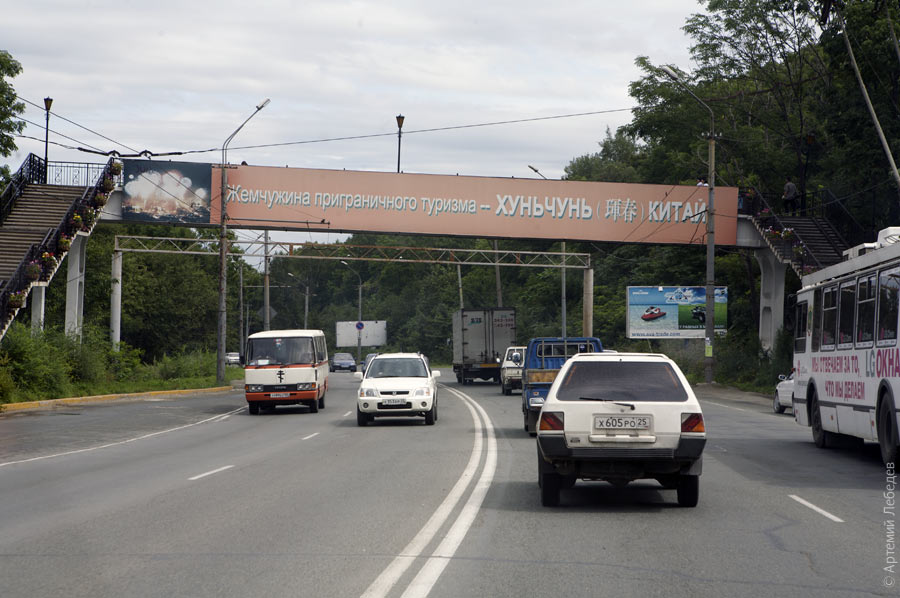 The pearl of border tourism—Hunchun China The most brilliant solutions are always the simplest. Why not use “Accident Documentation” signs in all our cities? 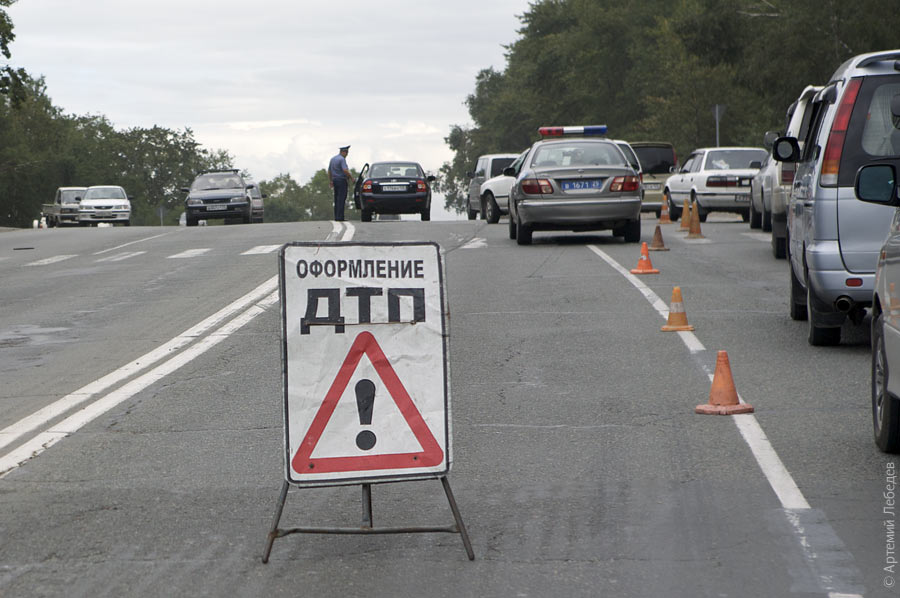 Accident Documentation ArtemMapSome cities are just disappointments. Everyone in Russia seems to know about the existence of a city called Artem. Yet this city has absolutely nothing except lampposts whose top half is painted yellow. Why every lamppost in the entire city is painted in this specific manner is a mystery. 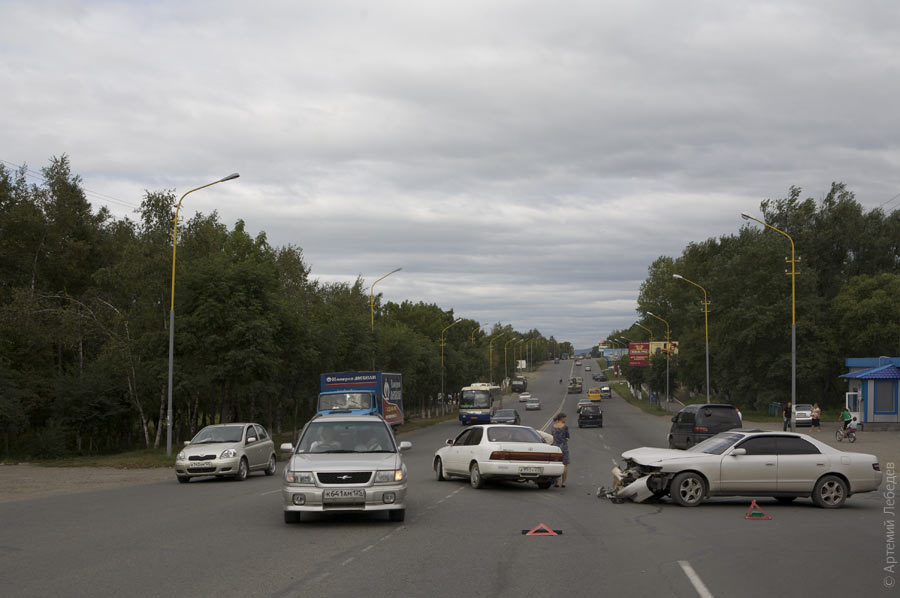 NakhodkaMapThe city looks so much like Petropavlovsk-Kamchatsky it’s scary. 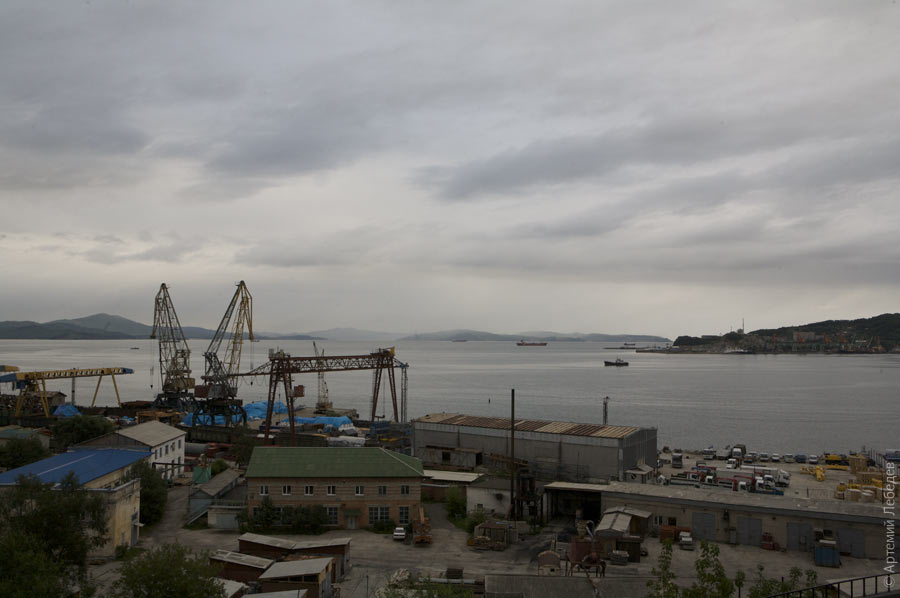 Everything in this picture is brilliant. Both the design of the traffic light pole and the power line rigged up to it from somewhere behind the trees. 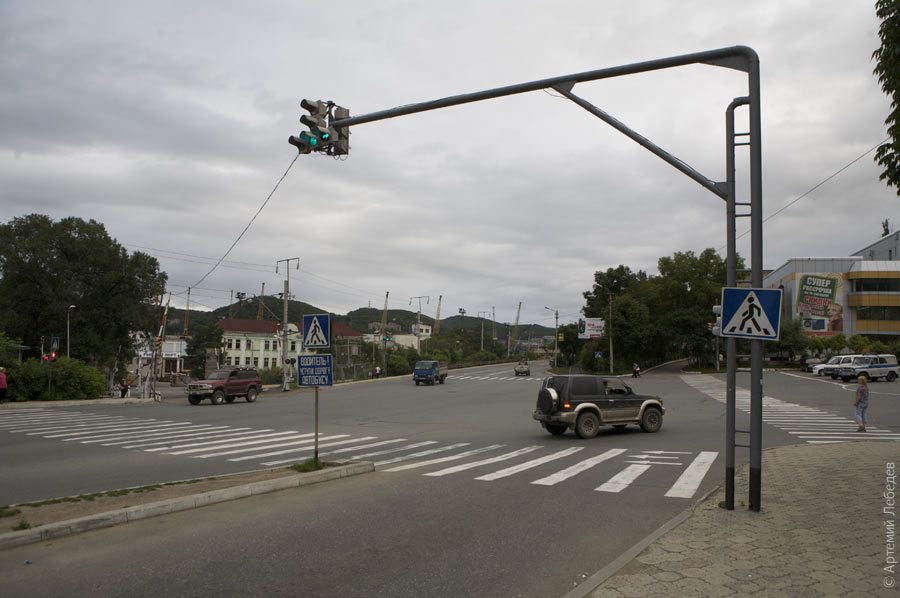 On the weekends, people from all over the region come to the beaches outside the city. They set up a bunch of identical blue canopies and enjoy the rugged seaside. The real find here is this Soviet wagon hitched to an American tractor unit. The driver must have popped in to take a dip with his sweetheart. Seeing this alone was worth driving ten thousand kilometers for. 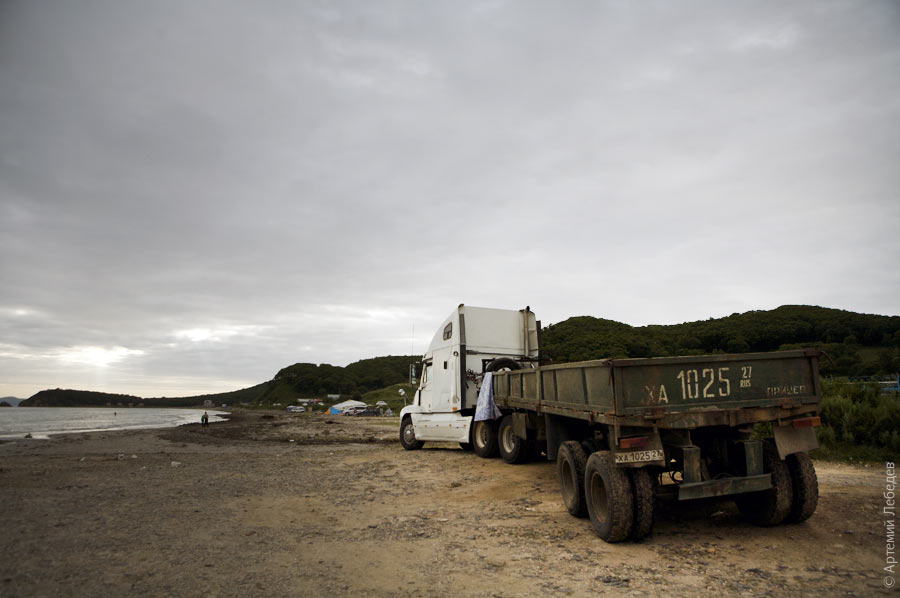 It’s too bad you can’t drive around the perimeter of Russia like you can in the US, for example. Ethnographic Expedition 2008 has reached its easternmost destination. Fun times were had. Now we head back west the same way we came. 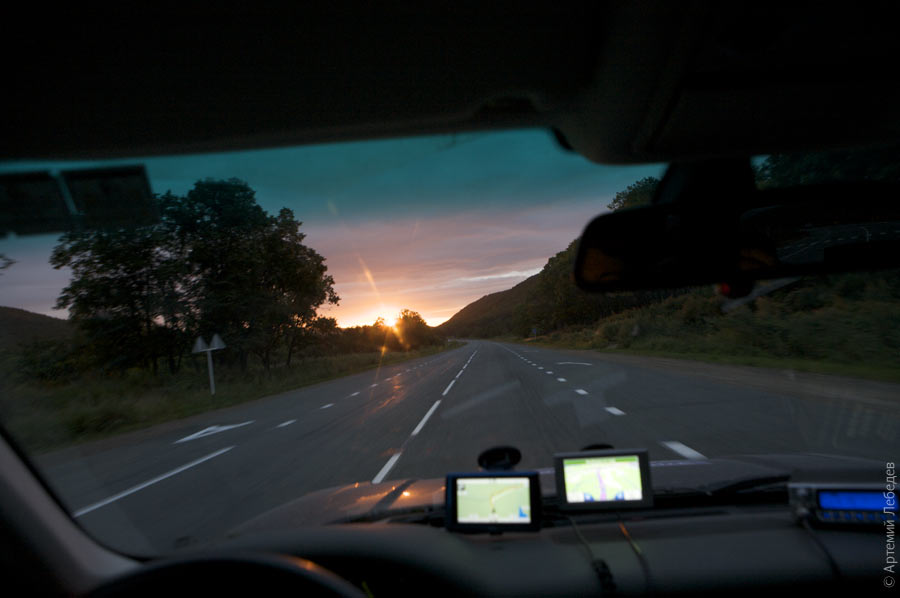 |